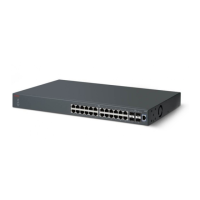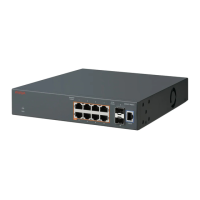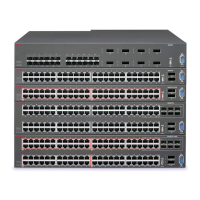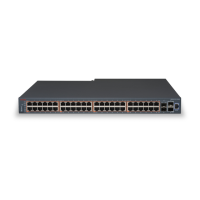Configuring BootP on the current instance of the switch or server
Use this command to configure BootP on the current instance of the switch or server, as the default
ip, the last known address, never, or always.
Procedure
1. Enter Global Configuration mode:
enable
configure terminal
2. To configure BootP on the current instance of the switch or server, enter the following
command:
[no] [default] ip bootp server {default-ip|last|disable|always]
Variable definitions
The following table describes the parameters for the ip bootp server command.
Variable Value
default-ip|last|disable|always Specifies when to use BootP:
• default-ip — use BootP or the default IP
• last — use BootP or the last known address
• disable — never use BootP
• always — always use BootP
DEFAULT: default-ip
no Disables the BootP server
default Sets the BootP server status to BootP or Default IP
Setting stack forced mode
This section describes the procedures and commands to configure and display stack forced mode
on a two unit stack.
Enabling or disabling stack forced mode
Use this procedure to enable or disable stacked forced mode on a two unit stack.
Before you begin
Stack Forced Mode requires a stack configuration of two units.
About this task
You can use Stack Forced Mode to manage one of the stand-alone units from a broken stack of two
with the previous stack IP address. When Stack Forced Mode is enabled, it only activates if the
stack fails.
Configuring the switch using ACLI
July 2015 Getting Started with Avaya ERS 3500 Series 77
Comments on this document? infodev@avaya.com

